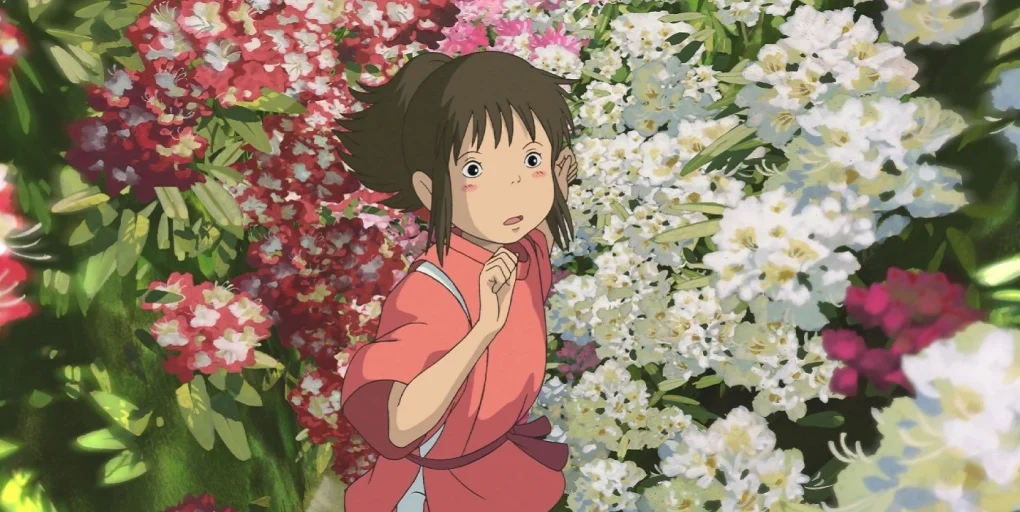iwillnotbebroken.org – Spirited Away (2001), directed by Hayao Miyazaki and produced by Studio Ghibli, is a masterpiece of animated cinema that blends fantasy, adventure, and coming-of-age themes into a visually stunning and emotionally rich narrative. The film tells the story of Chihiro, a young girl who becomes trapped in a mysterious and magical world, where she must navigate strange and perilous landscapes to find a way back to the real world. With its beautifully crafted animation, imaginative world-building, and profound themes of identity, transformation, and resilience, Spirited Away has captured the hearts of audiences worldwide and became one of the most critically acclaimed films of all time.
At the 75th Academy Awards, Spirited Away won the Oscar for Best Animated Feature, cementing its place as a global cultural phenomenon. Its universal appeal transcends age, offering a deeply layered narrative that resonates with children and adults alike. The film’s mix of breathtaking visuals, fantastical creatures, and rich emotional depth makes it one of the most beloved animated films of all time.
Plot Overview
Spirited Away begins with Chihiro (voiced by Rumi Hiiragi), a 10-year-old girl traveling with her parents to their new home. On the way, they take a detour and find themselves at the entrance to an abandoned theme park. When Chihiro’s parents explore further, they discover a seemingly deserted town and are transformed into pigs after greedily eating food left behind by the spirits that inhabit the area. Chihiro soon learns that this mysterious place is a bathhouse run by spirits, gods, and other supernatural beings.
As the bathhouse becomes the setting for most of Chihiro’s journey, she befriends several creatures, including Haku, a mysterious young man who can transform into a dragon, and Lin, a friendly worker at the bathhouse. Chihiro’s determination to save her parents and return to the real world is at the heart of the film’s plot, but she must first navigate a world full of strange rules and challenges, as well as confront her own fears and insecurities.
Throughout her journey, Chihiro’s transformation is both physical and emotional. She starts off as a whiny, frightened child but gradually matures as she learns to navigate the spirit world, take responsibility, and discover her own strength. Along the way, she encounters a range of memorable characters, from the enigmatic and threatening Yubaba, the witch who runs the bathhouse, to the kind-hearted No-Face, a spirit who becomes obsessed with Chihiro’s world.
Themes: Identity, Transformation, and Greed
The Journey of Self-Discovery
One of the central themes in Spirited Away is self-discovery. At the start of the film, Chihiro is depicted as a whiny, spoiled, and somewhat immature child. She is scared and overwhelmed by the unfamiliar world she finds herself in, and at first, she does not know how to cope with the situation. However, as the story progresses, Chihiro is forced to take on responsibilities and rise to the challenges around her. This journey of self-discovery is a key element of the film, and it is mirrored in her gradual transformation from a helpless girl into a brave and capable young individual.
The bathhouse, which represents a microcosm of the spirit world, serves as the setting for Chihiro’s growth. Each task and obstacle she faces—whether it’s helping the river spirit, dealing with No-Face, or managing the demands of her job—forces her to overcome her fears and learn new skills. Ultimately, Chihiro’s journey is a metaphor for the process of growing up, with the trials and challenges representing the trials of life that shape one’s identity.
Transformation and Redemption
Transformation is another key theme in Spirited Away. Not only do we see Chihiro’s personal transformation throughout the film, but many of the characters experience their own physical and spiritual changes. For example, Chihiro’s parents undergo a literal transformation into pigs, symbolizing their greed and lack of self-awareness. Similarly, the character of Haku, who initially appears as a stoic ally, is revealed to be under the control of Yubaba, and his transformation into a dragon symbolizes his struggle for freedom and redemption.
In a broader sense, the theme of transformation reflects the film’s deeper philosophical message: change is inevitable, and it is through accepting and adapting to change that characters are able to find meaning and resolution. The film suggests that redemption, growth, and healing are possible even in a world filled with hardship and uncertainty.
The Dangers of Greed
Another central theme explored in Spirited Away is greed, which is depicted as a corrupting and destructive force. This theme is best illustrated through the character of Chihiro’s parents, whose insatiable desire for food and material wealth leads to their transformation into pigs. Their greed not only physically transforms them but also serves as a commentary on the consequences of indulgence and a lack of awareness.
Throughout the film, Chihiro encounters other characters whose actions are driven by greed. No-Face, for example, is a spirit who becomes fixated on Chihiro and starts consuming other characters to gain more power and wealth. In contrast, Chihiro’s ability to stay humble, help others without selfish motives, and make decisions based on empathy and kindness sets her apart from the more self-serving characters.
The theme of greed is also reflected in the bathhouse’s workers, who are often seen as overworked and struggling to maintain their livelihoods. This creates a parallel between personal greed and systemic greed, pointing to the way society values material wealth and status at the expense of individual well-being and integrity.
Environmentalism and Pollution
Spirited Away also addresses environmental concerns, particularly the theme of pollution. One of the most visually striking sequences in the film involves Chihiro helping to cleanse the polluted river spirit. This sequence, in which Chihiro and the workers use a variety of tools to remove the garbage and dirt from the spirit’s body, is a powerful metaphor for the environmental degradation caused by human negligence and industrialization.
The river spirit’s transformation from a murky, polluted creature to a clean, powerful being echoes the idea that healing the environment requires effort, understanding, and respect. Miyazaki’s deep concern for the environment is evident throughout the film, as nature, pollution, and the importance of balance are recurrent themes.
Cinematic Style and Animation
Visually, Spirited Away is a stunning achievement. The film’s animation is richly detailed and immersive, with each frame brimming with beauty and imagination. The hand-drawn animation, combined with the meticulously crafted backgrounds, creates a dreamlike world that feels both fantastical and real. Miyazaki’s use of color, texture, and movement enhances the emotional weight of the story, from the lush landscapes of the spirit world to the bustling, lively interiors of the bathhouse.
Miyazaki’s attention to detail in creating the world of Spirited Away is nothing short of extraordinary. The spirit world is filled with bizarre and imaginative creatures, from the soot sprites to the giant radish spirit, each designed with a unique visual style that brings them to life. The bathhouse itself is a marvel of animation, with its towering, ornate architecture, bustling staff, and constantly shifting atmosphere.
The film’s score, composed by Joe Hisaishi, further enhances the immersive experience, with its sweeping orchestral melodies perfectly complementing the magical and emotional elements of the story. The music evokes a sense of wonder and poignancy, drawing viewers deeper into the world of Spirited Away.
Legacy and Influence
Upon its release, Spirited Away quickly became a global phenomenon, earning widespread critical acclaim and achieving significant box office success both in Japan and internationally. It was praised for its imaginative storytelling, its emotional depth, and its exploration of complex themes. The film won numerous awards, including the Academy Award for Best Animated Feature, making it the first—and so far, only—hand-drawn animated film to win in that category.
Spirited Away is widely considered one of the greatest animated films ever made and remains a defining work of Studio Ghibli. Its success helped cement Hayao Miyazaki’s reputation as one of the greatest animators and filmmakers of all time, with his ability to combine fantasy, art, and meaningful storytelling setting him apart from his contemporaries.
The film has also had a lasting cultural impact, influencing a wide range of filmmakers, animators, and artists. It has inspired countless adaptations, fan art, and scholarly analyses, and continues to be celebrated as a work of profound artistic and cultural significance.
Conclusion
Spirited Away (2001) is a timeless and magical film that captivates audiences with its stunning animation, imaginative world-building, and profound themes. Through the journey of Chihiro, the film explores complex ideas about identity, transformation, greed, and environmentalism, all while offering an enchanting and deeply emotional narrative. Hayao Miyazaki’s masterful direction and Studio Ghibli’s dedication to craftsmanship have made Spirited Away a milestone in animation, one that continues to resonate with audiences around the world. Whether viewed as a coming-of-age story, a fairy tale, or a social commentary, Spirited Away is a cinematic treasure that will remain an influential and beloved work for generations to come.


